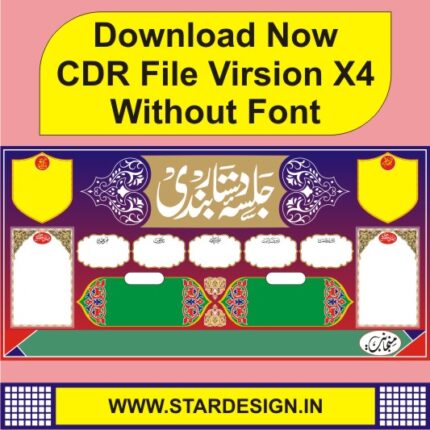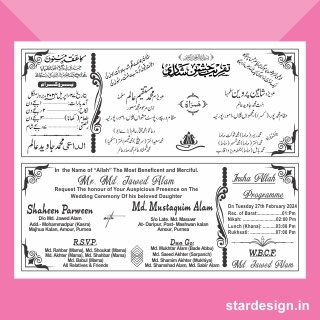Introduction to Muslim Weddings
Muslim weddings hold a significant place within both cultural and religious contexts, symbolizing not only the union of two individuals but also the merging of families and communities. Rooted in Islamic teachings and traditions, these ceremonies represent commitments that go beyond mere legal agreements, embodying spiritual and moral responsibilities. Across various cultures, the practices surrounding Muslim weddings can vary immensely, reflecting the diversity within the global Muslim community.
One prominent feature of Muslim weddings is the Nikah, the official marriage contract, which is typically conducted by an imam or a person knowledgeable in Islamic law. This contract outlines the rights and responsibilities of each spouse and is a vital part of the ceremony. The event often includes a series of rituals, such as the exchanging of rings, recitation of prayers, and the signing of the marriage contract in the presence of witnesses. However, customs related to these rituals differ significantly across regions and cultures, influenced by local traditions and social norms.
In recent years, there has been a noticeable shift in how Muslim weddings are celebrated. Traditional weddings might emphasize longstanding customs, such as elaborate dowries or extensive family gatherings, whereas modern approaches often incorporate contemporary elements like thematic decorations, destination weddings, and personalized vows. This evolution reflects changing societal norms and the desire among many couples to create unique celebrations that resonate with their personal beliefs while remaining rooted in their cultural heritage.
As we explore the specific elements of new Muslim weddings, it becomes clear that these celebrations are not simply about the rituals but also about fostering love, unity, and harmony within families and communities. The fusion of traditional and modern influences is creating a vibrant tapestry of wedding customs that honor both faith and personal expression.
Cultural Influences in Muslim Wedding Customs
Muslim weddings are a vibrant reflection of various cultural influences, showcasing a rich tapestry that encompasses traditions from South Asia, the Middle East, and Western cultures. The integration of diverse practices into wedding ceremonies is not merely an act of celebration but a representation of shared values and heritage. Each region contributes unique elements that blend seamlessly with Islamic rituals, enhancing the overall significance of the marriage union.
In South Asian cultures, for example, weddings are often grand affairs marked by colorful attire and elaborate ceremonies. The bride typically adorns herself in a richly embroidered lehenga or saree, while the groom may wear a sherwani, both reflecting regional aesthetics and the importance of sartorial elegance. Pre-wedding rituals such as the mehndi, where intricate henna designs are applied to the bride’s hands and feet, signify joy and festivity. These practices, while culturally rooted, are imbued with Islamic significance, emphasizing community involvement and familial blessings.
Middle Eastern weddings, on the other hand, present a different cultural narrative. They often highlight rituals such as the ‘Zaffa,’ a musical procession celebrating the couple’s entry, characterized by drumming and dancing. The marriage contract, or ‘Nikah,’ is also a crucial component, symbolizing the legal and spiritual commitment made between the partners. Traditional Middle Eastern attire, often adorned with gold and jewels, encapsulates the importance of heritage and community during the wedding ceremony.
In Western cultures, Muslim weddings may embody a fusion of contemporary practices with Islamic traditions. Incorporating elements such as personalized vows, modern venues, and diverse catering options demonstrates adaptability and openness. This blend showcases how cultural influences enrich Muslim wedding customs and honor the collective identity of the communities involved. By integrating these varying elements, Muslim weddings become not only a celebration of love but also a testament to the vibrant diversity within the Islamic faith.
Ceremonial Elements of a New Muslim Wedding
The celebrations surrounding a new Muslim wedding are rich with tradition and hold deep significance for the couple and their families. One of the key components of this ceremony is the nikah, which refers to the formal marriage contract. It signifies the couple’s mutual agreement to enter into a lifelong partnership, and it is crucial that both parties fully understand the responsibilities and rights that this contract entails. The nikah is often officiated by an imam or a religious leader, and witnesses are required to validate the agreement.
Another vital aspect of a new Muslim wedding is the role of the wali, or guardian, who is typically the bride’s father or male relative. The wali’s consent is essential during the nikah to ensure that the marriage is established within the parameters of Islamic law. This highlights the importance of family in Muslim culture and the community’s support for the newly married couple. The role of the wali underscores the familial bonds that ultimately shape the couple’s new life together.
The mahr, or dowry, is another critical element of a Muslim wedding. It represents a monetary gift from the groom to the bride, which she has the autonomy to use as she sees fit. The mahr not only serves as a token of respect but also emphasizes the groom’s commitment to his bride’s financial security. The amount and form of the mahr can vary based on personal choice, cultural customs, and family traditions.
Additional rituals, such as the khatna, which includes prerequisite rites, may also take place prior to the wedding day. Following the nikah, the walima, or marriage banquet, is organized to celebrate the union with family and friends. This gathering emphasizes togetherness and community, offering an opportunity to express joy and support for the couple. Moreover, many modern couples are personalizing their ceremonies with contemporary elements, seamlessly blending tradition with their own unique expressions of love.
The Role of Language in Celebrating Love
The significance of language in Muslim weddings cannot be overstated, as it serves as a critical conduit for expressing sentiments, vows, and cultural traditions. In today’s diverse society, where individuals from various backgrounds come together, the use of both Urdu and English languages plays an essential part in enhancing the overall experience. Urdu, being a language steeped in rich poetic traditions, offers a unique way to convey deep emotions associated with love and commitment. Its use can evoke a sense of nostalgia and cultural pride among Urdu-speaking guests, aiding in the creation of a memorable atmosphere.
Conversely, English serves as a universal language that can bridge gaps between guests from varied backgrounds. By integrating English into the wedding ceremony, Muslim couples can ensure that non-Urdu speakers feel included and engaged. This bilingual approach not only reflects the couple’s heritage but also fosters an environment of inclusivity, making it easier for everyone present to connect with the celebration, regardless of their linguistic background. Inviting speakers to deliver vows or speeches in both languages engages attendees and ensures that the cherished sentiments resonate widely.
The blending of Urdu and English during ceremonies can also extend to written materials, such as invitations, programs, and vows. This practice allows couples to honor their cultural roots while also acknowledging the diverse nature of their guest list. By utilizing both languages in wedding speeches, music, and rituals, the couple can create an emotionally rich narrative that resonates on multiple levels. The seamless integration of Urdu and English not only enriches the ceremony but also creates a legacy of mutual respect and understanding, which is essential in fostering lasting relationships among families from diverse backgrounds.
Planning a New Muslim Wedding: Tips and Trends
Planning a new Muslim wedding involves a blend of tradition, personal values, and the latest trends that reflect the couple’s unique relationship. When considering venues, it is essential to choose a location that not only accommodates the number of guests but also aligns with the couple’s vision for their special day. Popular options include banquet halls, outdoor gardens, and religious venues that resonate with the couple’s faith and traditions.
When selecting vendors, couples should prioritize professionals who understand the cultural significance and legal requirements of Islamic marriages. It is advisable to review portfolios, check references, and conduct interviews to ensure the selected vendors can create a wedding atmosphere that reflects the couple’s preferences. From photographers to caterers, each vendor should be capable of executing their vision while respecting the values integral to a Muslim wedding.
Understanding the legal requirements for marriage is equally crucial. Couples must familiarize themselves with the laws in their locality regarding marriage licenses and any necessary documents mandated by both religious and civil authorities. This knowledge helps in avoiding last-minute complications and ensures that the couple is legally bound as they embark on their new life together.
Current trends in Muslim weddings include eco-friendly celebrations that prioritize sustainability, such as using biodegradable decorations and sustainable catering services. Additionally, minimalist themes have gained popularity, emphasizing simplicity and elegance through clean lines and understated decor. Couples are encouraged to infuse these trends with their personalities, creating an event that speaks authentically to who they are as individuals and as partners.
Ultimately, a Muslim wedding should reflect the couple’s journey and values. Incorporating personal touches while attending to logistical considerations and emerging trends will help create a memorable and meaningful celebration that honors both tradition and individuality.





















Reviews
There are no reviews yet.